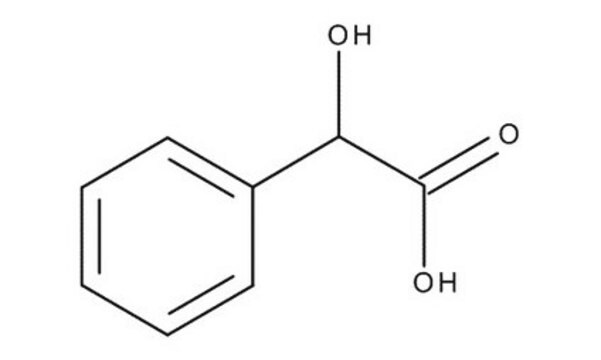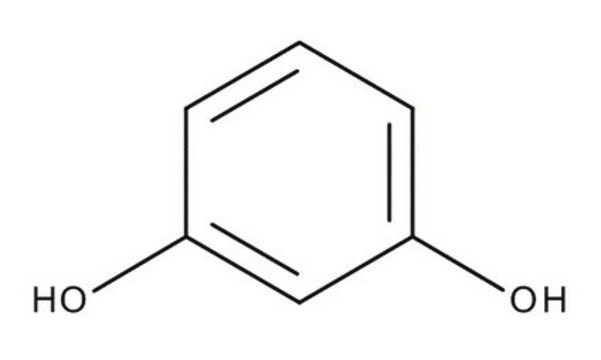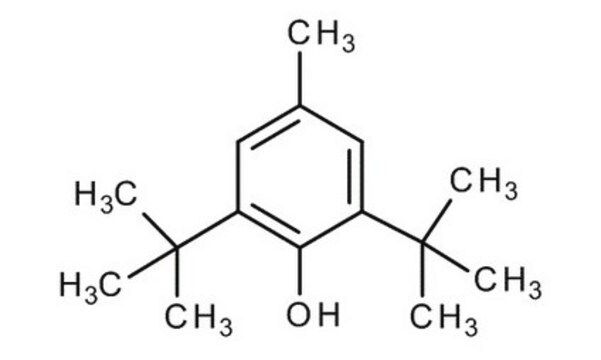8.22333
Hydroquinone
for synthesis
Synonym(s):
Hydroquinone, 1,4-Dihydroxybenzene, Quinol
About This Item
Recommended Products
vapor pressure
<0.1 hPa ( 25 °C)
Quality Level
Assay
≥99.5% (GC)
form
solid
autoignition temp.
515 °C
potency
302 mg/kg LD50, oral (Rat)
reaction suitability
reagent type: reductant
bp
287 °C/1013 hPa
mp
172 °C (decomposition)
transition temp
flash point 165 °C
solubility
70 g/L
density
1.358 g/cm3 at 20 °C
bulk density
600 kg/m3
storage temp.
2-30°C
InChI
1S/C6H6O2/c7-5-1-2-6(8)4-3-5/h1-4,7-8H
InChI key
QIGBRXMKCJKVMJ-UHFFFAOYSA-N
Application
- To synthesize metal nanoparticles by reduction of metal salt precursors.
- For the reduction of aryldiazonium salt intermediates to aromatic compounds.
- In combination with ethylenediaminetetraacetic acid (EDTA) to prepare urchin-like gold nanoparticles via a one-pot seedless growth process.
Signal Word
Danger
Hazard Statements
Precautionary Statements
Hazard Classifications
Acute Tox. 4 Oral - Aquatic Acute 1 - Aquatic Chronic 1 - Carc. 2 - Eye Dam. 1 - Muta. 2 - Skin Sens. 1B
Storage Class Code
11 - Combustible Solids
WGK
WGK 3
Flash Point(F)
329.0 °F - closed cup
Flash Point(C)
165 °C - closed cup
Certificates of Analysis (COA)
Search for Certificates of Analysis (COA) by entering the products Lot/Batch Number. Lot and Batch Numbers can be found on a product’s label following the words ‘Lot’ or ‘Batch’.
Already Own This Product?
Find documentation for the products that you have recently purchased in the Document Library.
Customers Also Viewed
Related Content
Exploring genotoxicity and DNA damage through multiplexing with MILLIPLEX® multiplex genotoxicity assays using Luminex® xMAP® technology enables the high-throughput measurement of phosphorylation levels of multiple proteins simultaneously and reduces sample volume, time, and cost.
Our team of scientists has experience in all areas of research including Life Science, Material Science, Chemical Synthesis, Chromatography, Analytical and many others.
Contact Technical Service














